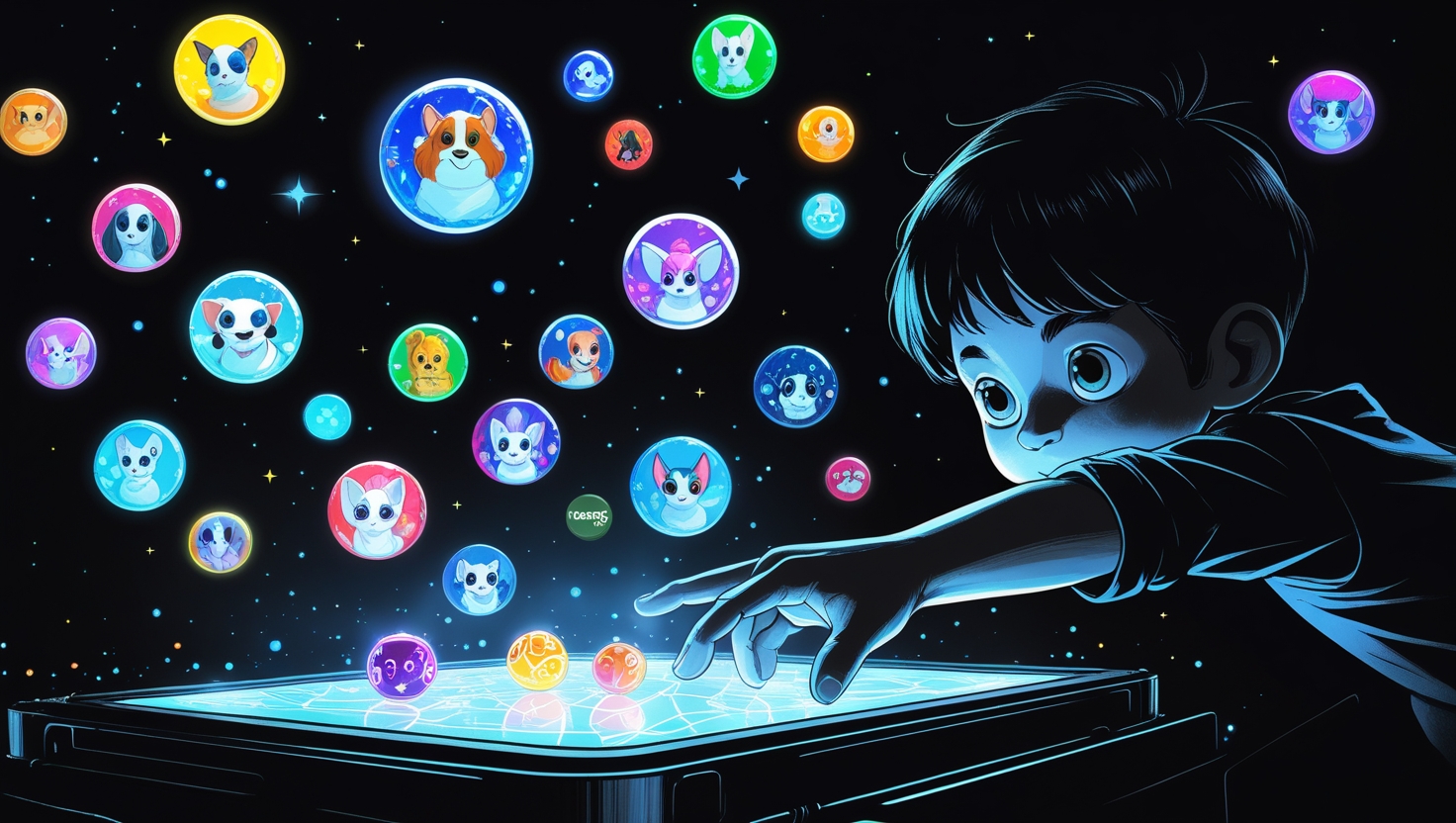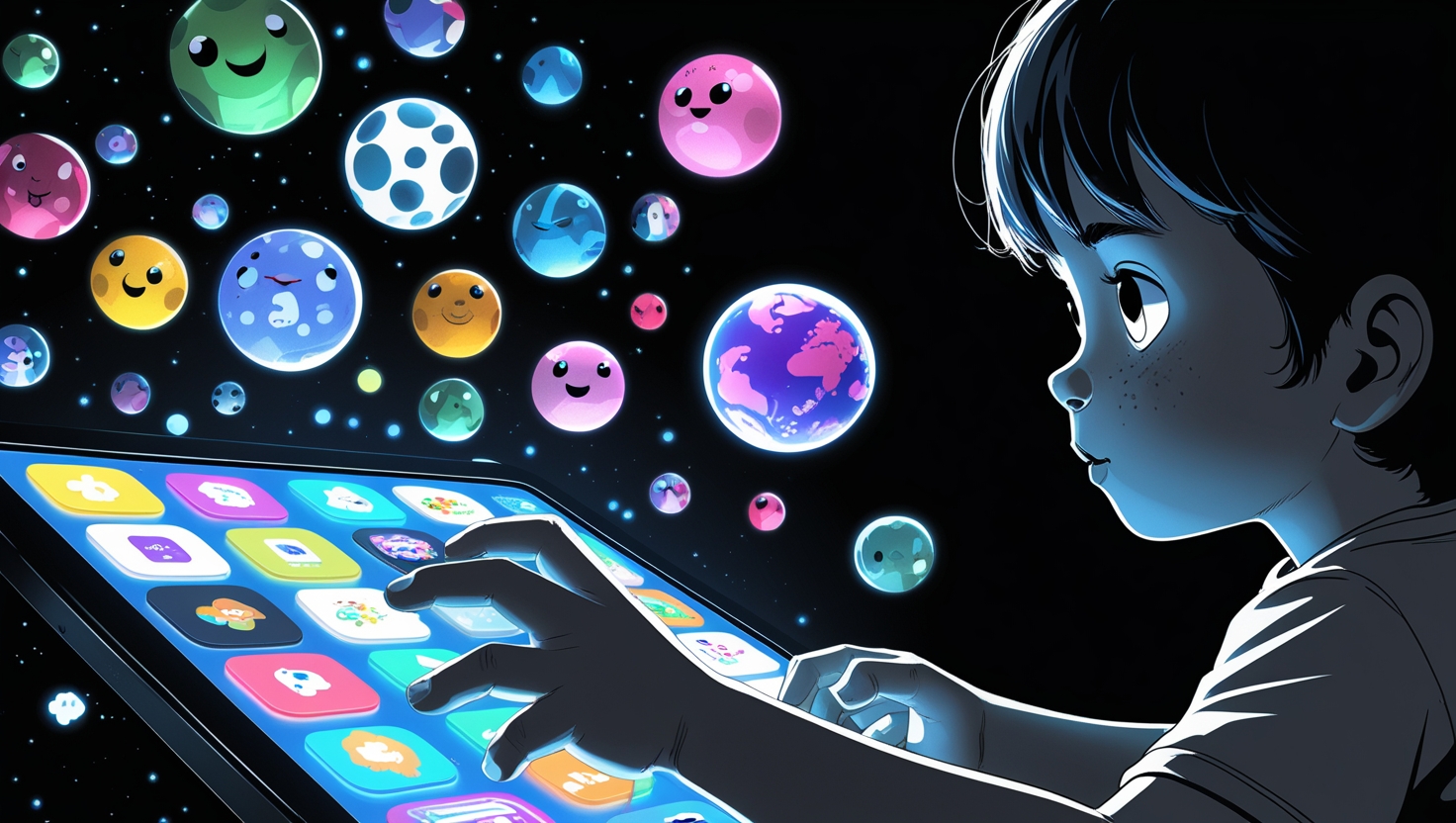In today’s fast-evolving technological era, children are not only users but active participants in digital culture. Digital products play a pivotal role in education and entertainment, blending fun with learning. From interactive learning apps to creative digital art supplies, the market is bursting with innovative ideas that stimulate the intellect and creativity of young minds. In this article, we will explore some of the digital products ideas for kids in 2025, analyze successful examples like interactive learning apps, smart educational games, animated audiobooks, and creativity-driven digital platforms, and provide actionable insights for parents, educators, and developers looking to enter this vibrant market.
Before we dive in, if you’re interested in a broader overview of trending digital product ideas, check out our related article on 100 trending digital products ideas or visit our homepage for more insights. Additionally, trusted industry insights can be found in resources such as EdTech Magazine, which provides reliable updates on educational technology.

The Importance of Digital Products in Children’s Learning and Entertainment
The integration of digital products tailored for children has revolutionized the way educational content is delivered. Unlike traditional classroom settings, these digital platforms allow for self-paced learning, immediate feedback, and the customization of content based on a child’s unique interests and developmental stage. This approach not only fosters independent learning but also encourages exploration and creativity, making learning a playful and engaging adventure.
As technology becomes increasingly interwoven with educational theories, designing digital products for kids requires both innovation and responsibility. The balance between security, age-appropriateness, attractive visuals, and intuitive navigation is critical. Developers must create solutions that are secure, engaging, and accessible, ensuring that children can both learn and have fun safely.
Innovative Digital Products Ideas for Kids: A Comprehensive Analysis
Developers and educators are continually experimenting with new digital product concepts that cater to the diverse needs of children. Here, we examine several categories of digital products ideas for kids that are trendy in 2025:
Interactive Learning Applications – Trending Digital Products
Interactive learning applications are transforming the educational experience by allowing children to engage directly with content. Unlike traditional methods, these apps incorporate multimedia elements—such as animations, sound effects, and gamified challenges—making learning more captivating. Parents often appreciate these applications not only for their educational value but also for their ease of use and fun interactive features. The success of such apps largely rests on ensuring that the content is both challenging and accessible for various age groups, and that privacy and data security are prioritized.
Smart Educational Games – Trending Digital Products
Smart educational games are designed with a dual purpose in mind: to entertain and to educate. These games are typically built with levels that progressively enhance a child’s skills, from basic problem-solving to advanced critical thinking. Coupled with visually appealing graphics and responsive design, these platforms ensure that kids are actively involved in their learning process. Moreover, many of these digital products integrate parental control features, allowing parents to monitor progress and customize content appropriately.
Animated and Interactive Audiobooks – Trending Digital Products
Animated audiobooks are another fascinating digital innovation that is capturing the attention of children and parents alike. By combining visual storytelling with soothing narration, these digital products provide an immersive experience that can stimulate a love for reading from an early age. The use of digital animation makes stories more relatable as characters come to life on the screen, thereby enhancing the narrative and making comprehension easier for young readers. Such products also encourage interactive reading sessions, where children may be prompted to answer questions or engage in mini-activities related to the story.
Creativity-Driven Digital Platforms – Trending Digital Products
Creativity-driven digital platforms offer a space for children to express themselves through art, music, and inventive storytelling. These products may include easy-to-use design tools, digital scratch pads, or even simple animation software, allowing kids to bring their ideas to life. Some platforms have seen considerable success due to their simplicity and ability to merge basic digital art with fun, making them perfect examples of simple digital products for children that are both accessible and enriching. With intuitive interfaces and minimal learning curves, these tools encourage experimentation and creative expression.
Key Design Considerations for Digital Products for Children
While the creative aspect of digital product development is intriguing, there are numerous critical factors that developers must keep in mind so that their products become successful and secure. First, the security of children’s information is not negotiable. In an era where digital tracks are scrutinized, offering strong data protection mechanisms is a prime concern. Secondly, digital products must be designed with the cognitive skills and motor functions of specific age groups in mind. This includes creating content with proper levels of challenge, engaging visuals, easy accessibility, and interactive elements suitable for age.
Furthermore, the creation of these digital products needs to involve children and parents. Real human experience is the most valuable source of information regarding usability and engagement. For instance, beta testing sessions with small groups of children can reveal underlying usability issues that may not be evident to adult designers. Such feedback can be invaluable in streamlining the product to serve the end user better.
Detailed Comparison of Popular Digital Product Categories
To better visualize the differences and similarities between various digital products ideas for kids, consider the following table which outlines key aspects such as interactivity, creative potential, and parental features:
| Product Type | Interactivity | Creative Expression | Parental Involvement | Data Security Measures |
|---|---|---|---|---|
| Interactive Learning Apps | High – Gamified challenges and quizzes | Moderate – Some creative inputs possible | High – Often built-in monitoring features | Robust encryption and child-safe privacy policies |
| Smart Educational Games | Very High – Immersive and engaging game mechanics | Low to Moderate – Some customization options | Moderate – Parental dashboards available | Regular security updates and parental controls |
| Animated Audiobooks | Moderate – Interactive storytelling options | High – Visual and narrative creativity | High – Shared reading experiences encouraged | Standard data safety practices and minimal data requirements |
| Creativity-Driven Platforms | Moderate – Tools for art and design | Very High – Designed around user-generated content | Moderate – Limited direct parental controls, but oversight recommended | Enhanced privacy settings and secured content sharing |
Tools and Strategies for Building Digital Products for Kids
For those considering the development of digital products geared towards children, a combination of educational theory and technical innovation is essential. Platforms for app development, such as Unity for interactive games or Adobe Creative Cloud for digital art tools, offer out-of-the-box functionalities that can significantly reduce production time. Leveraging visual programming languages or drag-and-drop interfaces for education-focused applications can also simplify the process.
Besides technology, the design process should include extensive user testing and feedback sessions. Have you ever thought about what your child might enjoy in an interactive learning app? Asking such direct questions to potential users (or even to the parents) can yield valuable insights that directly inform the design process. This human-centric approach makes sure that the final product is both useful and engaging.
Real-World Examples and Success Stories – Trending Digital Products
There have been numerous success stories in the digital products for kids arena. Programs like interactive language learning programs and smart puzzle games have received worldwide acclaim for their ability to captivate kids while improving academic performance. Similarly, digital art software designed for kids has provided a creative outlet that combines learning with entertainment, thereby creating interest in subjects like design and storytelling. These illustrations demonstrate that, when accomplished well, digital items can be both informative and extremely enjoyable.
It’s not rare to find parents expressing their enthusiasm in online forums and social media communities about these products. What their experiences teach us is, when learning content is paired with engaging visual interactive content, children not only learn faster, but they fall in love with learning for a lifetime. For creators, these stories serve as a daily reminder of the power in real-world effect that well-thought-out digital products have the ability to bring into early learning.
Combining Education and Entertainment: The Future of Digital Products for Kids
What does the future hold for digital products for kids? The trend is unmistakably leaning towards a seamless combination of education and entertainment, often termed as ‘edutainment.’ This fusion is not just about making learning fun—it’s about creating experiences that adapt to the individual learning curve of each child. As artificial intelligence and machine learning continue to evolve, we can expect digital products to become even more personalized, offering content that dynamically adjusts based on a child’s performance and interests.
Moreover, the development of tools and frameworks that focus specifically on child-friendly design is gaining traction. Whether it’s ensuring that data security protocols exceed the industry standard or integrating parental interaction features, developers are constantly striving to create a safe and enjoyable digital environment. For parents and educators, this means a growing array of products that are as beneficial as they are entertaining, empowering children to learn and explore in an increasingly digital world.

Final Thoughts and Actionable Steps
As we finish this walk-through of digital product concepts for kids in 2025, it is apparent that the marketplace is not only innovative but also full of opportunities. Success will depend on coupling good educational content with engaging interactivity and ensuring the end product is safe, age-appropriate, and visually appealing. Developers, educators, and even parents can take a cue from the success stories of interactive learning apps, educational games, and creativity-based platforms to create future-ready products.
Have you ever wondered how you could be a part of this dynamic market? Whether you’re an educator looking to recommend valuable resources or a developer ready to bring a new product to market, remember that the fusion of education and entertainment is more critical now than ever. Embrace user-centric design, focus on data security, and continuously seek feedback from both children and their parents. These practical suggestions will help develop digital products that inform but also instill a love of creativity and learning.
In short, whether you are a developer, parent, or educator, today is an excellent day to learn about and invest in digital products ideas for kids. The crossroads of technology and education are paving the way for unprecedented opportunities in learning and creativity. So what do you say? Are you ready to dive into this dynamic and promising market?
How can I differentiate my digital product in a competitive market?
To differentiate your digital product, focus on creating a unique user experience that combines intuitive design with interactive and creative content. Ask yourself, “What makes my product stand out?” and consider incorporating features like personalized learning paths, enhanced parental control, and visually stunning graphics. Researching successful products and listening to user feedback are also essential strategies for carving out your niche in the market.
What makes interactive learning apps stand out among other digital products?
Interactive learning apps stand out due to their engaging content that combines gamification with educational material. They provide instant feedback, adapt to the child’s progress, and often include features that allow parents to track improvements. This blend of fun and education makes these apps incredibly popular among both children and educators.
Are there easy digital art tools available for kids to sell?
Yes, there are digital art platforms designed specifically for ease of use by children. These platforms often provide simple interfaces where kids can create art effortlessly, and some even allow for a safe marketplace or portfolio feature, making it easier for young artists to share or even sell their work under proper supervision.
